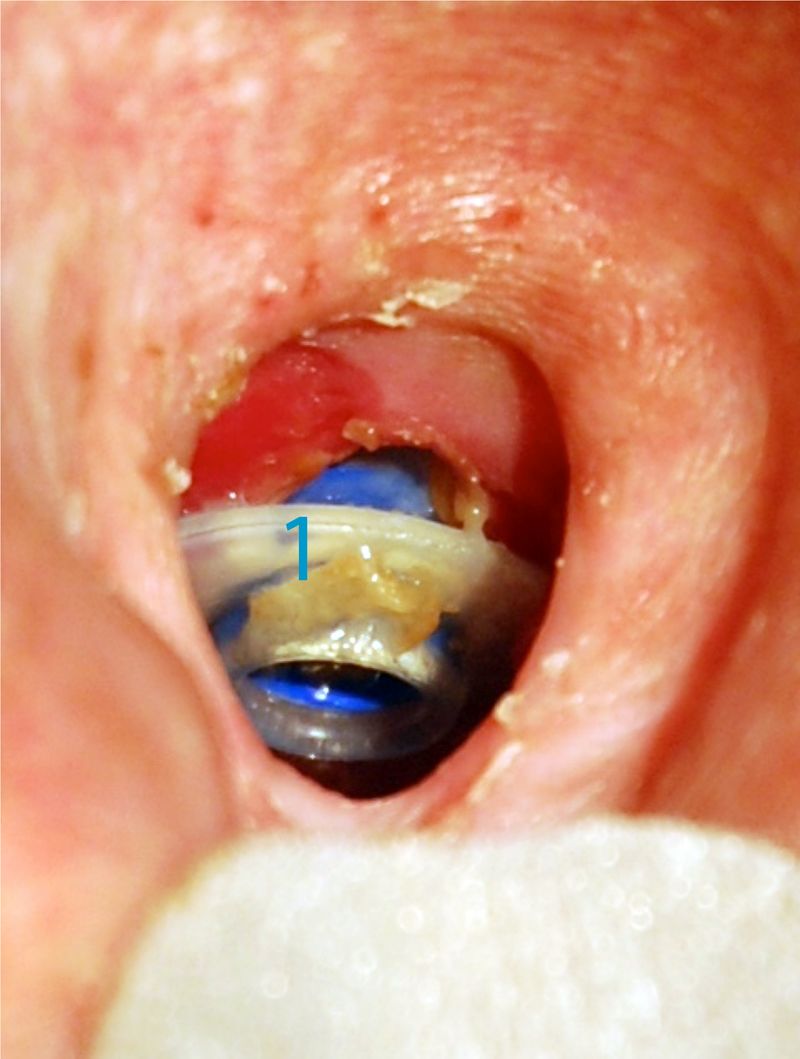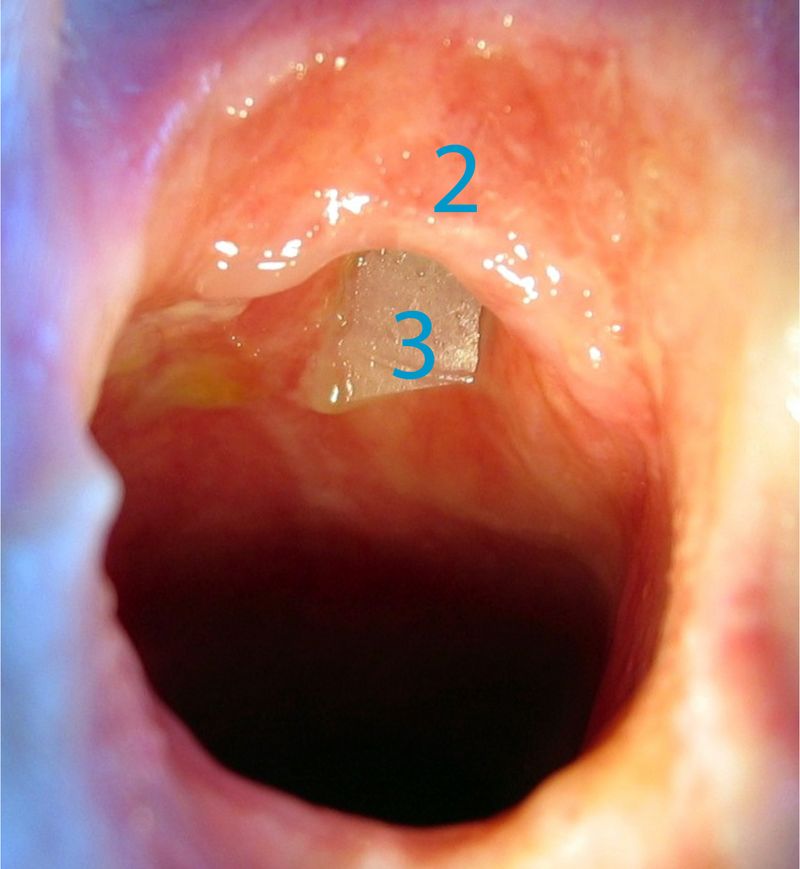Spontaneous shunt closure / Prosthesis extrusion
Pathophysiology
Spontaneous shunt closure is usually the result of the voice prosthesis becoming embedded (extrusion) an makes speaking either difficult or impossible. The voice prosthesis migrates slowly towards the trachea or esophagus. The tissue of the trachea or food pipe can move over the ingrown flange and block the shunt. This is usually a slow process that takes days and weeks, and is encouraged if the voice prosthesis is too short or by infections around the shunt.
Symptoms
Patients with a prosthesis extrusion often do not attend the doctor/SLP until they are completely unable to speak, as it is difficult to see the prosthesis extrusion and subsequent closure of the shunt if it occurs in the esophagus. Sometimes the patient notices that the voice prosthesis has tilted into the wind pipe or shunt, and will then seek medical advice before the shunt closes. If speaking becomes increasingly difficult over a period of days, this can also be a sign of the shunt closing over.
Diagnostics
The main examination for diagnosing spontaneous shunt closure is attempting to talk without the voice prosthesis. If speaking has always been easy but the patient is now unable to talk without the voice prosthesis, then it can be assumed that the shunt has closed.
Therapy
In some cases if the shunt has only been closed for a few days, it can be probed under local anesthesia using a clamp, a thin stomach tube or a pigtail catheter. It can then gradually be dilated and a new voice prosthesis of adequate length inserted. Great care must be taken using these measures to ensure that the voice prosthesis is positioned correctly. A via falsa is to be avoided. A flexible transnasal endoscopy should be used to check the correct position of the probe or the pigtail, and of the voice prosthesis.
If the shunt cannot be probed with sufficient safety, it can be relaid once the site has healed.


